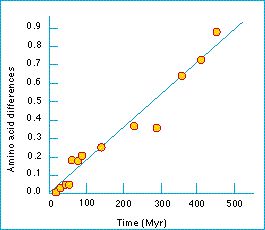Molecular evolution and neutral theory - Why is molecular evolution constant?

Explaining the molecular clock
Kimura reasoned that the molecular clock is more easily explained by neutral drift than selection. Neutral mutations crop up at random intervals, but if they are observed over a long time period the rate of change will appear to be approximately constant. Neutral drift will drive evolution at a fairly constant rate.
Natural selection, Kimura argued, does not produce such constant change. Under selection, the rate of evolution is influenced by environmental change as well as the mutation rate; and it would require a surprisingly steady rate of environmental change, over hundreds of millions of years, in organisms as different as snails and mice and sharks and trees to produce the constant rate of change seen in the figure.
Kimura's discussion of the evolution of the vertebrate wing illustrates the argument:
1. First there was a long period before the wing evolved, in which the vertebrate limb remained relatively constant (in the form of the tetrapod limb of amphibians and reptiles).
2. This was followed by a shorter period when the wing originated and large changes occurred.
3. There was a long period of fine-tuning of a more or less finished wing form.
Throughout this erratic pattern of morphological evolution, molecular evolution has occurred at a fairly constant rate and was probably produced by the non-random process of natural selection.
Figure: the rate of evolution of hemoglobin. Each point on the graph is for a pair of species, or groups of species. Some of the points are for a-hemoglobin, others for ß -hemoglobin. From Kimura (1983).
| Next |



